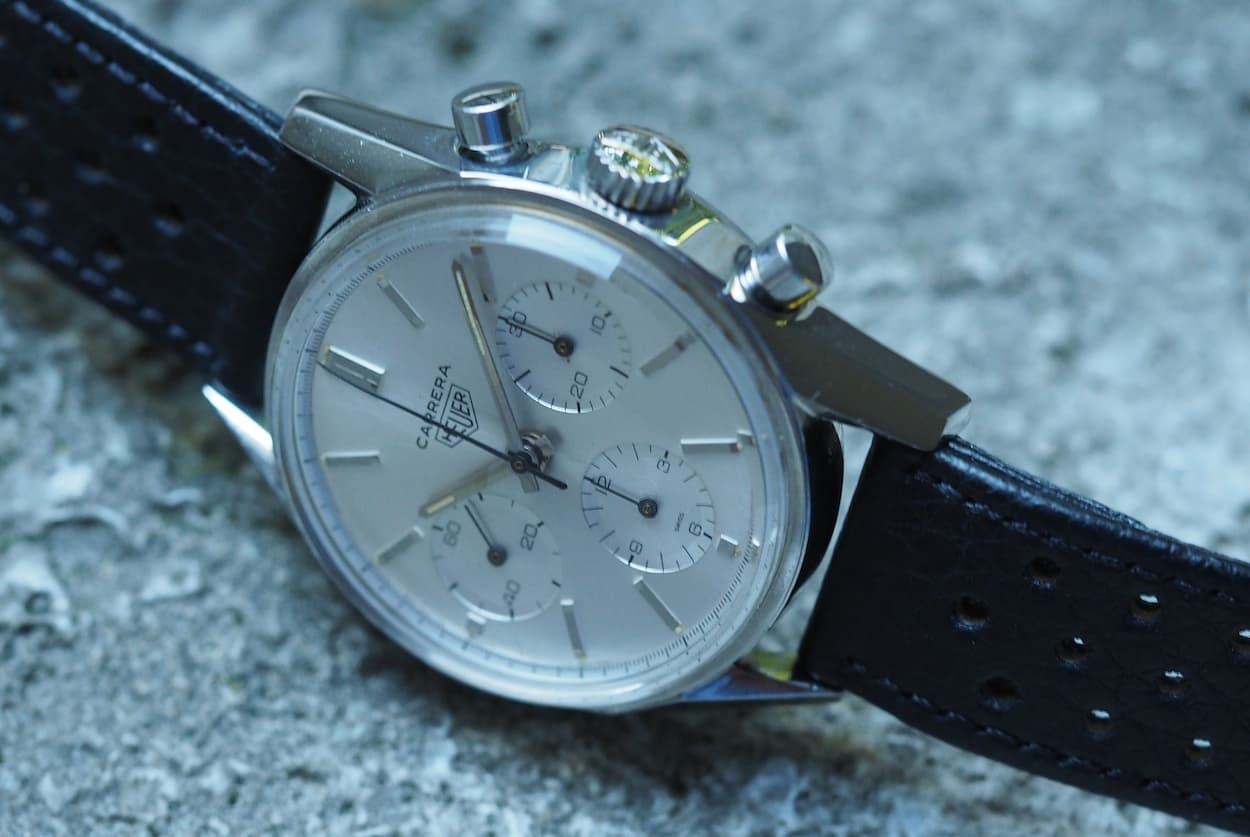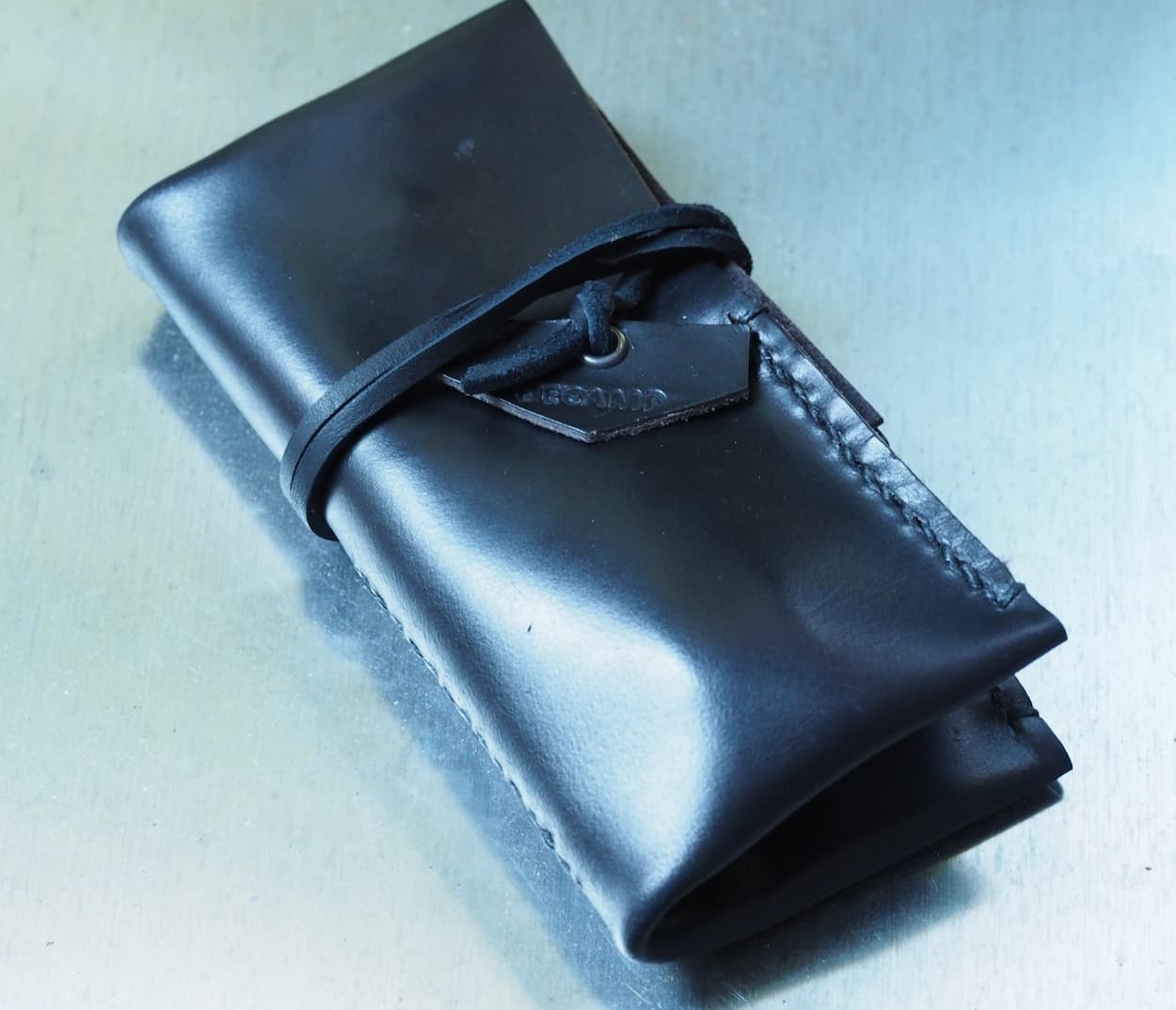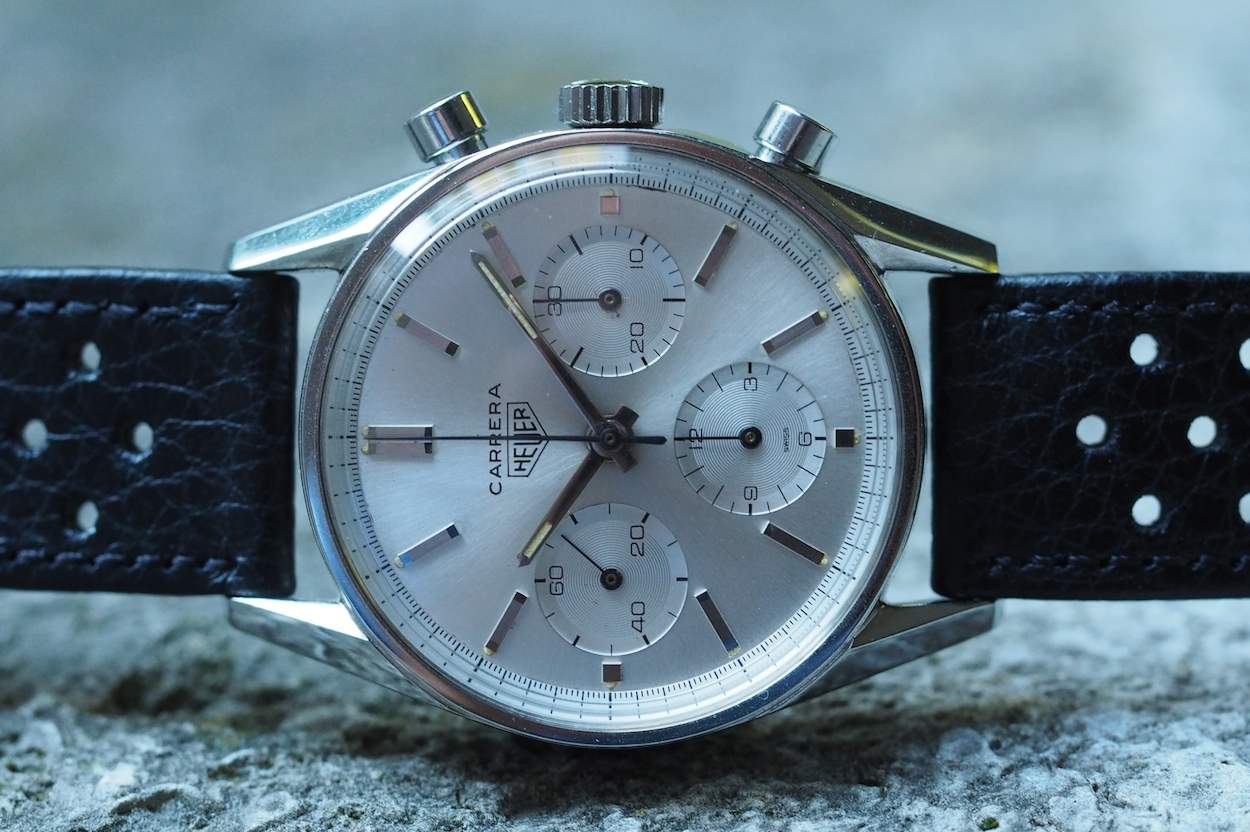#TBT Heuer Carrera 2447S
I started thinking about this almost a year ago. Last autumn, my Dad turned 64 and it immediately drew my attention to the big “65” that was coming a short twelve months later. I honestly had no idea of what to get him but I knew that it needed to be a watch. It was one of those “what do you get the person who has everything” conundrums and while my Dad certainly doesn’t “have everything”, he’s like most guys in the sense that he generally procures what he wants/needs without waiting. Anyhow, I knew I wanted the watch to be special, sporting, and, of course, vintage. Additionally, I wanted to somehow blend in the love of cars and racing into the purchase as my Dad instilled this within me from a very young age. This ultimately led me to consider a chronograph, but, interestingly, my father never loved most chronographs due to typical overcrowding on the dial. Rewind to this past January, though, when I visited my parents in the USA with a grouping of chronographs. My Dad considered and admired a number of the watches, but he only commented on one: the Carrera. He simply stated that he thought it was the best looking chronograph ever designed. Problem solved: the concern over what to buy for his 65th was no more and a careful hunt began, the result of which will be discussed. A special “Happy Birthday” #TBT is here with the Heuer Carrera 2447S.
It’s hard to fault my Dad’s comment about the Heuer Carrera; it is one of the most attractive and iconic chronographs ever designed and I’ll later go into some depth about the details. Despite increasing interest in all things Heuer, the 2447 really is the model that set the stage for the (TAG) Heuer that exists today. Everything from the current Carrera line to the racing advertising that TAG uses today has roots in this model. I’d also argue that there are many other chronographs that owe their designs to this landmark model. So, let’s dig in a touch and learn about the details, how this piece was sourced, and how I “curated” the package.
The piece shown in this article is known as a 2nd execution Heuer Carrera 2447S although it is without a “T” for Tritium on the dial so it is an early piece. The first execution pieces were made in 1963 for roughly a year and featured a dial in either matte black or flat white. In late 1964/early 1965, the sunburst silver/white dial was introduced. The 1st execution pieces are extremely rare and while they are gorgeous in their own right, the 2nd execution pieces are most often pictured as the foundational pieces.
The Heuer Carrera 2447S features a beautiful 36mm stainless case with a 18mm lug width. In today’s terms, this sounds rather small and it seems strange that a watch of this size has so many enthusiastic collectors when lining it up next to other keystone pieces such as the Omega Speedmaster or Breitling Navitimer, but the Heuer is no little piece and it probably compares more aptly to another mid-60’s release, the Rolex Daytona. I’ll talk more on the Daytona later when we come to the dial and movement. Returning to the case, though, an aspect that really makes it stand out is the angled, chamfered lug-work. There’s really nothing about these in common with the other contemporary Heuer chronographs such as the Camaro or Autavia and I like that. The Carrera lugs are long, thick enough to provide some mass, but thin enough to remain elegant. They have “faces” both on the inside and outside of the lug all while flowing smoothly from the case itself. I own a highly polished example of this watch and it was fantastic for me to get ahold of a proper example. Keep this in mind, as the subtleties are important on the Carrera.
There are some other niceties related to the case. View it from the non-pusher side and you’re met with some very fine detailing. The lugs flow up to the crystal but there is a beautiful case line that drops down at the heart of the diameter. Here again, my personal example has lost the bulk of this to the polishing wheel and it’s rather lovely to see what it should look like.
Flipping the Heuer Carrera over reveals a rather thick, unadorned, screw-down case back. This case back is mirrored with an equally thick domed “top hat” crystal. The sum total yields a watch that’s far thicker and sturdier than head-on pictures would suggest.
The crown and pushers on the Heuer Carrera are perfectly sized for the watch. Basic caps exist and perfectly tactile to use. The crown, in this case, is a signed piece that was likely added during a service many years ago, but fits the watch well and enables for the satisfying daily ritual of winding. While signed crowns were installed on Heuer Carreras, it is likely that a piece of this age came with an unsigned specimen.
As on so many watches, the dial is really where the money is made. In the case of the Heuer Carrera 2447S, this is absolutely true. While I have gushed over what now seems like countless numbers of chronographs, the Carrera separates itself with its absolute simplicity and legibility. In fact, this simplicity is echoed on the manual wind Daytonas of the day and this makes sense as both sourced their pieces from Singer. Where the Carrera has a slight advantage over the Rolex, for my tastes at least, is the lack of various measurement scales. Collectors go gaga for the so-called exotic dial Carreras with tachymeter inner bezels, the pandas and reverse pandas, and those with blue or red script, but for my money, the simple original is best. There is nothing extraneous found on this dial and everything from the hands, the font, the palette, and the hues are perfect. Simple hands, whether they’re the central hour and minute indicators or the thin sub register needles, are wonderfully weighted to match such an elegant dial. The legible applied hour indices, which are essentially shared with same era Daytonas, are augmented with subtle, yet purposeful lume dots on the outer track. Moving outside, an angled minutes track helps draw the eye inwards to the center of the dial.
When reached, one sees that perfect “Heuer Carrera” script; it’s the stuff of legends. Pie pan sub registers are ridged and of a wonderfully proportioned size befitting a dial of this diameter. All in all, I can’t disagree with my Dad; the Heuer Carrera is truly one of the best chronographs ever designed.
Inside the Heuer Carrera 2447S beats the venerable column wheel Valjoux 72. As is almost always the case, the “tell” is the asymmetric positioning of the pushers with respect to the crown. In the case of the Heuer, the bridge is signed, but the movement goes unadjusted. It’s not an issue for concern, though, as most brands did not modify the movement.
My buying experience for the Heuer Carrera 2447S was a serious case of luck; I honestly thought it would have been easier! For certain, vintage chronographs are blazing hot today, but finding a specific manual wind Heuer at the snap of a finger is darn near impossible right now even if you’re willing to pay above market. It honestly amazes me how many, comparatively speaking, manual wind Daytonas are on the market today versus similarly aged Heuer Carreras. In any case, about 5 months ago, after having no luck in finding a good Carrera, I contacted Jeff Stein and asked if he had any suggestions. To my surprise, he had just found a very early, flat white Carrera 2447 and was about to sell the 2447S you see here. Needless to say, the ability to buy a piece from a trusted source was of great comfort to me and the deal was done. The watch arrived in the USA and waited until just this past weekend when I presented it to my Dad, but my work wasn’t finished…
I wanted to make the package special upon presentation, so I went about “curating” the total package. My first email was to one of my favorite strap makers, Giuliano (he advertises on the Chronocentric OnTheDash Chronotrader forum), as I wanted to order a black leather Corfam-look strap with racing holes. Giuliano had saved my Dad’s measurements from an earlier order and the 18/16 strap was underway! As you can see, it turned out beautifully – as always. A big thanks to the “custom tailor” from Italy!
My next note was to Erik Akin of DECAMP Goods, whose products we reviewed here. I chatted with Erik about the watch I was presenting and he and I brainstormed on a unique watch roll to fit the piece. Erik suggested black Horween and me being a master of the rhetorical, I obviously said yes!
But there was more to discuss and we came to the idea of punching racing-style holes in each of the two individual watch roll pouches in order to mirror the forthcoming strap. Finally, in lieu of Eric’s normal rectangular Decamp logo tag, we opted for a trapezoidal design to show that this roll was clearly for one brand and one brand only. The outcome was and is amazingly crafted and is so good that I have ordered a second piece for myself!
A special thanks goes to Erik for working through the creative process with me to create such a complementary accessory for this important watch.
I finally got a chance to see the Heuer Carrera 2447S in person about a week ago and as I mentioned, it was revelatory to handle such a nice specimen. The crystal thickness, lug detail, and case condition are all fantastic. I photographed the watch the morning before presenting it and loosely put it on my wrist. As you can see, the watch wears well and I really think that the 36mm diameter is an unfounded concern for all except those who normally pull off massive Panerais or U-Boats. The lugs add a lot of size to the watch and hug the wrist nicely. While I suppose vintage chronographs generally work well with most types of dress due to their patina and, typically, less imposing sizes, some are more versatile than others. The Carrera, with its single tone dial, lack of bezel, and paucity of font make it a perfect companion with more formal dress, especially if equipped with something like a crocodile strap. Conversely, when paired with the racing strap you see here, the watch works with everything from jeans to 99% of what passes as business dress. The bottom line is that it looks wonderful no matter how it is employed.
Needless to say, my Dad was impressed when my wife and I presented him with the Heuer Carrera 2447S. He was surprised and he did recall, unsolicited by the way, his comment on the Carrera earlier that year. He liked the strap, the roll and even ordered a NOS Heuer buckle to fit. Furthermore, he put his Rolex Explorer to the side for the rest of the trip!
Regarding some buying notes on the Heuer Carrera 2447S, I’d keep tabs on eBay, chrono24, and the chronotrader. There are certainly some well-known Heuer-specific sites out there as well as country specific forums that typically feature vintage pieces. Obviously, originality is key on these pieces and while replacement parts do show up from time to time, they are becoming scarce and expensive. I recall the days when Carreras were all over eBay and they were dirt-cheap and it really wasn’t so long ago. Those days, sadly, are gone. While the exotic dial Carreras seem to crest $10,000 with relative ease, a 2447S can likely still be found for $6,000 in decent shape. I expect these prices to continue to climb and as always, watch the big auction houses as a good barometer. By the way, if you are thinking of buying a Carrera, the good folks on the “On the Dash” forum will happily give you sound advice on whether the piece is worth your hard-earned cash.
Thanks for letting me share a special Birthday gift on this week’s #TBT. Giving a watch like the Heuer Carrera 2447S to my Dad was the least that we could do, but I’m glad that we could do it. I hope that my father wears it in great health for many years to come! Again, I also want to thank all the people in the watch community who helped make the package a reality. Finally, if you’re even half-considering a Heuer Carrera, know that, without a doubt, it’s one of those cornerstone pieces for a chronograph collection. If you collect Speedmasters, Daytonas, or Navitimers, the Carrera is a perfect bookend. If you own a Carrera or happened to gift a special watch to a relative, feel free to share your story with us below. Until next week…



































